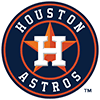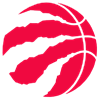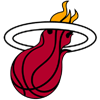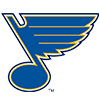Occasionally, I like to give a peak behind the curtain at an arcane topic. Since I'm able to use my new Todd's Takes for some timely player analysis, I thought I'd switch gears this week and provide a glimpse into my laboratory.
The impetus is pitchers whose performances so far are way off from expectations. For example, Martin Perez and Michael Wacha continue to excel while Jose Berrios, Lucas Giolito and Trevor Rogers remain disappointments. The question I'm investigating is, "How real are their current skill levels?"
I'll spare you the diatribe on stability points and how using them to address the issue is a misapplication.
I've been playing around with some numbers, trying to identify another approach to this conundrum. I began last week when the average games played per team was 70. The initial idea was to see how well pitchers' skills at that time correlated to their final level. I looked at 2021 and 2019 using K%, BB%, HR% and Hit%.
Deciding on a minimum of 100 batters faced was empirical, but it was enough to include some of the better relievers. Admittedly, if I decide to take this process to the next level, I'll need to refine the data set to include pitchers within a tight range of batters faced rather than average games played. For now, the study is in the embryonic stage, hoping for proof of concept.
The first study correlated my projected skills with the final marks. Shown is R, the correlation
Occasionally, I like to give a peak behind the curtain at an arcane topic. Since I'm able to use my new Todd's Takes for some timely player analysis, I thought I'd switch gears this week and provide a glimpse into my laboratory.
The impetus is pitchers whose performances so far are way off from expectations. For example, Martin Perez and Michael Wacha continue to excel while Jose Berrios, Lucas Giolito and Trevor Rogers remain disappointments. The question I'm investigating is, "How real are their current skill levels?"
I'll spare you the diatribe on stability points and how using them to address the issue is a misapplication.
I've been playing around with some numbers, trying to identify another approach to this conundrum. I began last week when the average games played per team was 70. The initial idea was to see how well pitchers' skills at that time correlated to their final level. I looked at 2021 and 2019 using K%, BB%, HR% and Hit%.
Deciding on a minimum of 100 batters faced was empirical, but it was enough to include some of the better relievers. Admittedly, if I decide to take this process to the next level, I'll need to refine the data set to include pitchers within a tight range of batters faced rather than average games played. For now, the study is in the embryonic stage, hoping for proof of concept.
The first study correlated my projected skills with the final marks. Shown is R, the correlation coefficient.
K% | BB% | Hit% | HR% | |
|---|---|---|---|---|
2019 | 0.73 | 0.62 | 0.52 | 0.36 |
2021 | 0.70 | 0.61 | 0.50 | 0.28 |
While I wasn't happy with the results, the trend matched that of stability points. Here are the accepted stability points for the above pitching metrics:
| Skill | Batters Faced |
|---|---|
| Strikeout | 70 |
| Walk | 170 |
| Hit | 630 |
| HR | 1320 |
While it's incorrect to assume a pitcher's skill to luck ratio is 50/50 after 70 plate appearances, it's encouraging that the order of how well the projections correlate matches the order in which the four stats stabilize.
The next step was correlating the pitchers' skills to their final mark, keeping in mind the shortcoming of having batters range from 100 to around 350 for each season.
K% | BB% | Hit% | HR% | |
|---|---|---|---|---|
2019 | 0.92 | 0.84 | 0.84 | 0.82 |
2021 | 0.91 | 0.85 | 0.83 | 0.74 |
Strikeouts showed the best correlation, and they have the lowest stability point. This isn't a coincidence, but it does suggest that a skills change for strikeouts should be treated as real sooner than for the other metrics investigated.
Perhaps it's evident, but the objective of this analysis is to apply it to a rest-of-season projection engine. As such, the next question to investigate is whether there is an optimal weighted average of projected and skills to date which improves the correlation to the season-ending marks.
After some tedious Excel work, here is what was discovered. The %YTD is the weighted average of the pitcher's skills to date, the rest being projected.
%YTD | change R | |
|---|---|---|
K | 81% | 0.01 |
BB | 77% | 0.03 |
Hit | 76% | 0.02 |
HR | 74% | 0.01 |
Sure enough, the correlation improved, which is a good thing, suggesting proof of concept. As suggested, I need to do a lot more work refining the subset since I am sure the results at 50 batters faced differs greatly from 350, and that's the range of this study.
The holy grail is finding the optimal weighted average for increments of batters faced (say 50), then coding that into the ROS projection engine so it uses each hurler's own batters faced to set the optimal weighted average.
From a more general perspective, the same conclusions can be drawn from the correlations as from the stability points: a change in strikeout skill becomes real the soonest, followed by walks, hits and homers.
Here's a practical application, using Jose Berrios. His career strikeout rate is 23 percent. It's been a tick or two higher the past two seasons. Currently, it's 18.8 percent. Doing the above calculation, where 81 percent of Berrios' expected final mark is based on 18.8 percent, we're looking at a final mark of 20.0 percent. To finish the season at that level, Berrios needs to record a 20.9 percent strikeout rate the rest of the way.
Repeating the calculation for walks, hits and homers and plugging the results into my expected ERA generator reveals that Berrios is projected for a 4.76 ERA over the rest of the season. Clearly, this isn't optimistic, but it's based on what the global population has done at this point of the season relative to the rest of the campaign. The catch is Berrios doesn't have to mimic what happens on average. He can figure it out and move toward his career levels. This is why we play the game, to elucidate performances we gauge better than what's expected, or at least more bullish than the market.
Clearly, the process requires oodles more work, but there are ample encouraging findings to make it an offseason project. Hopefully you received a little insight into how the sausage is made.







































